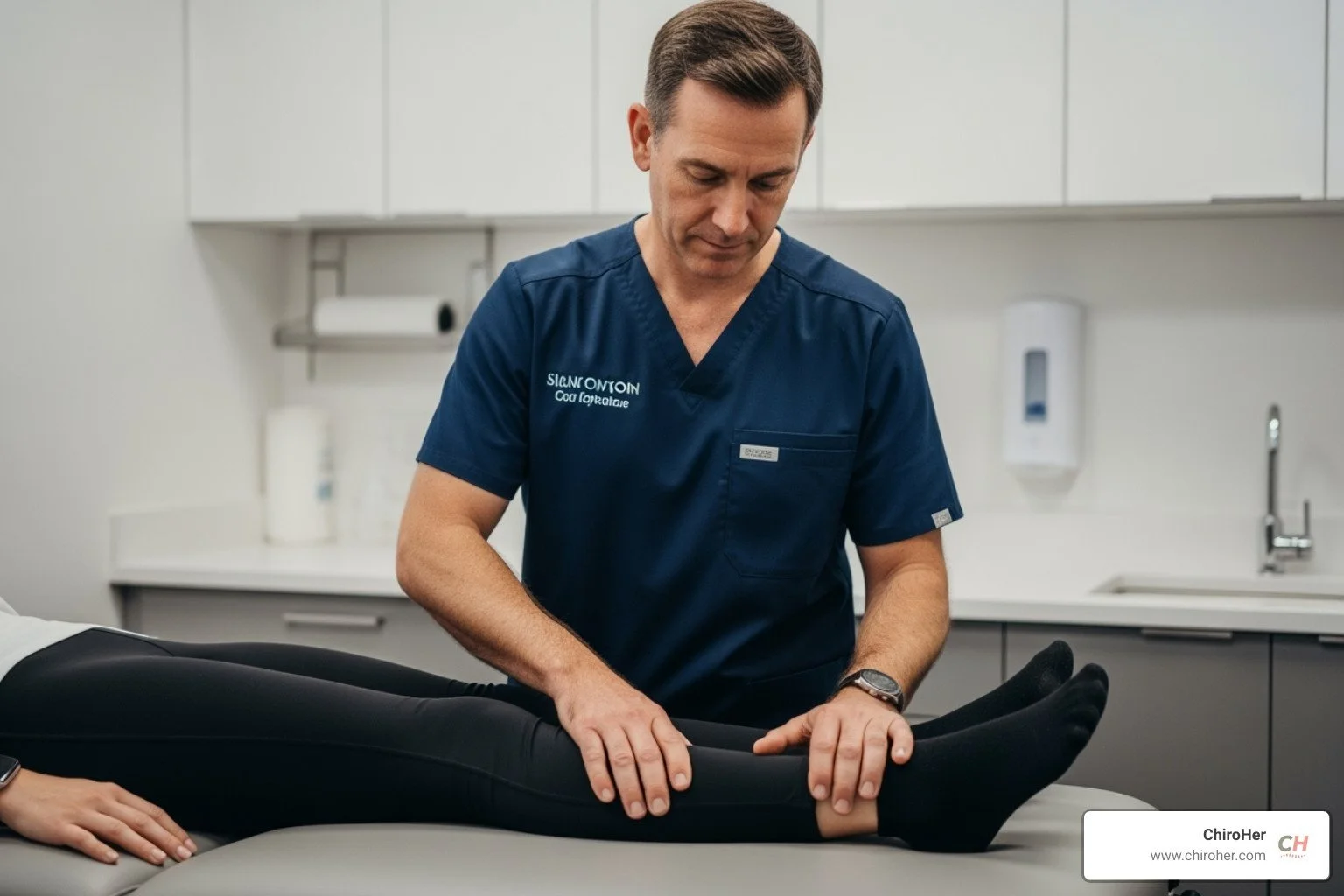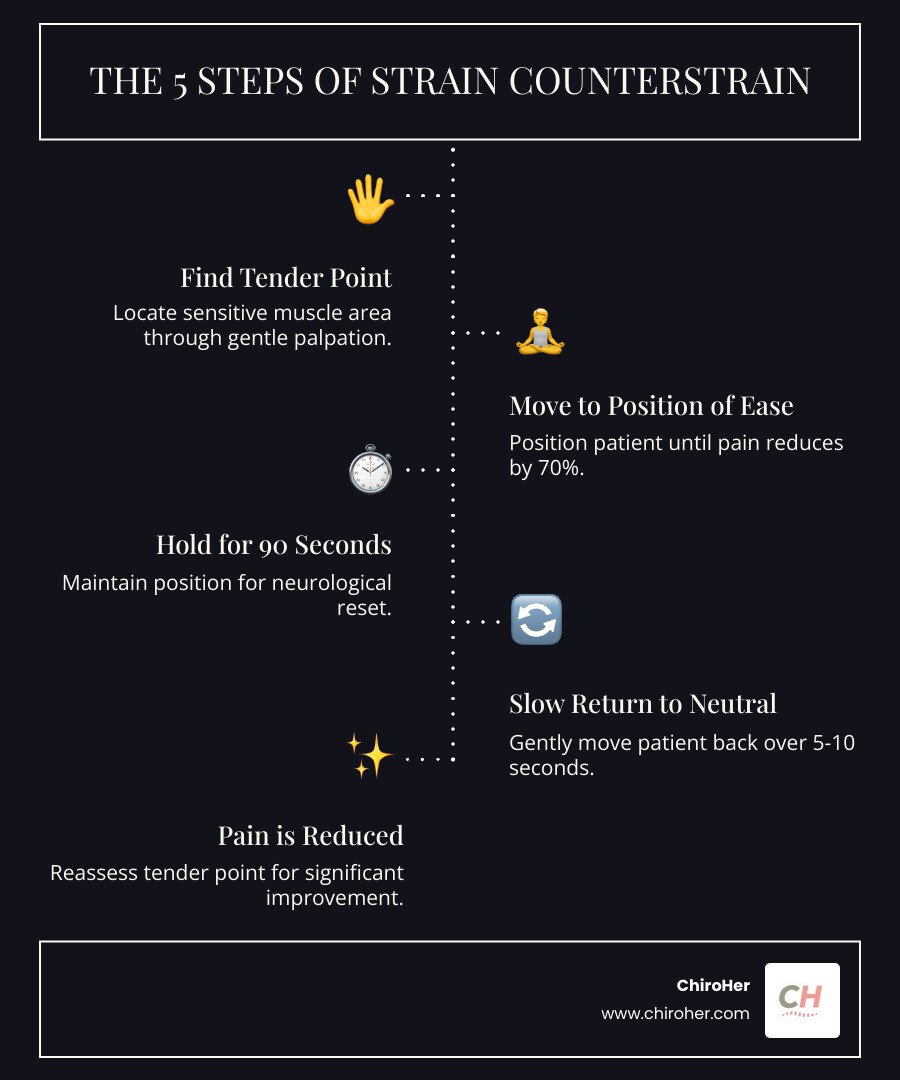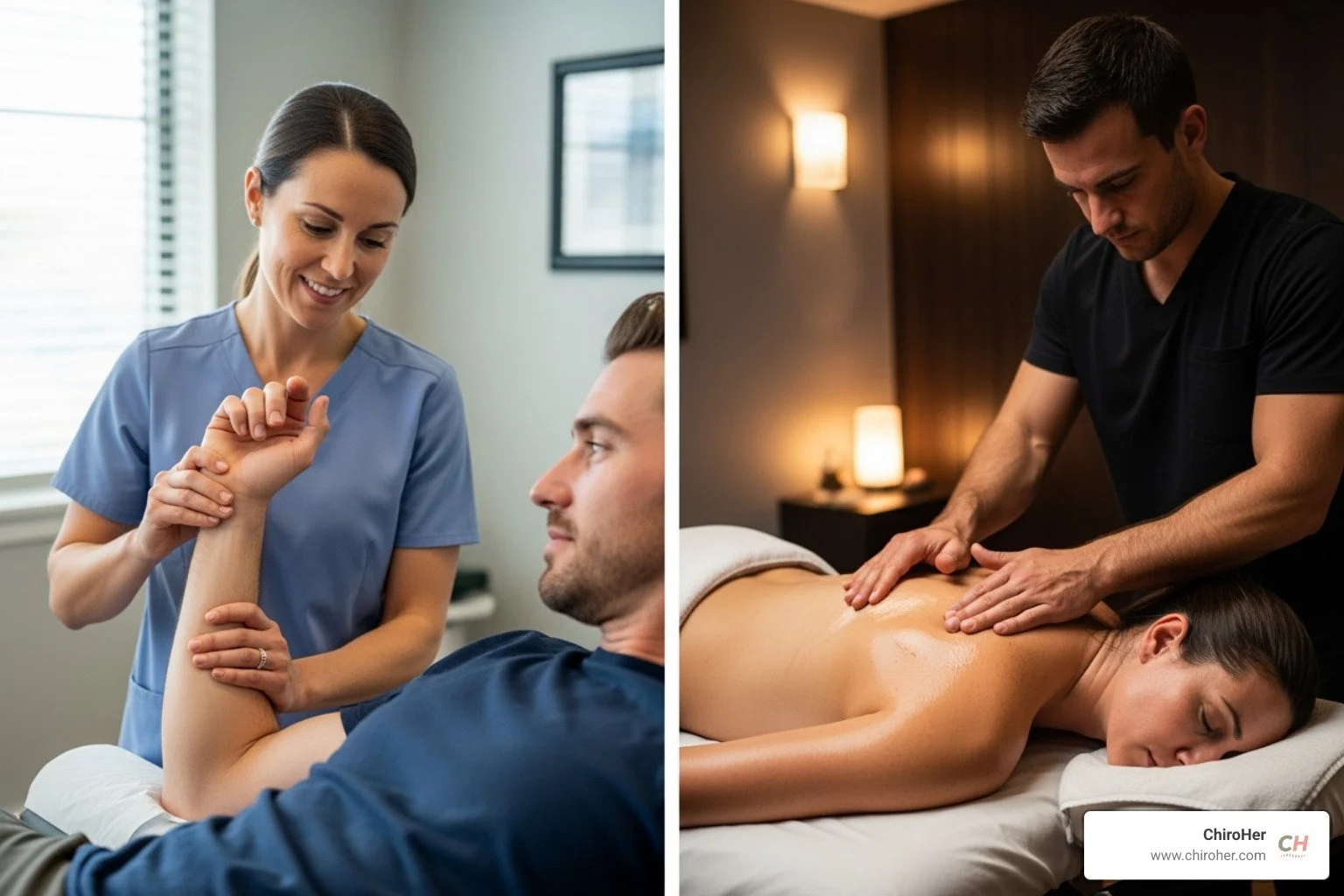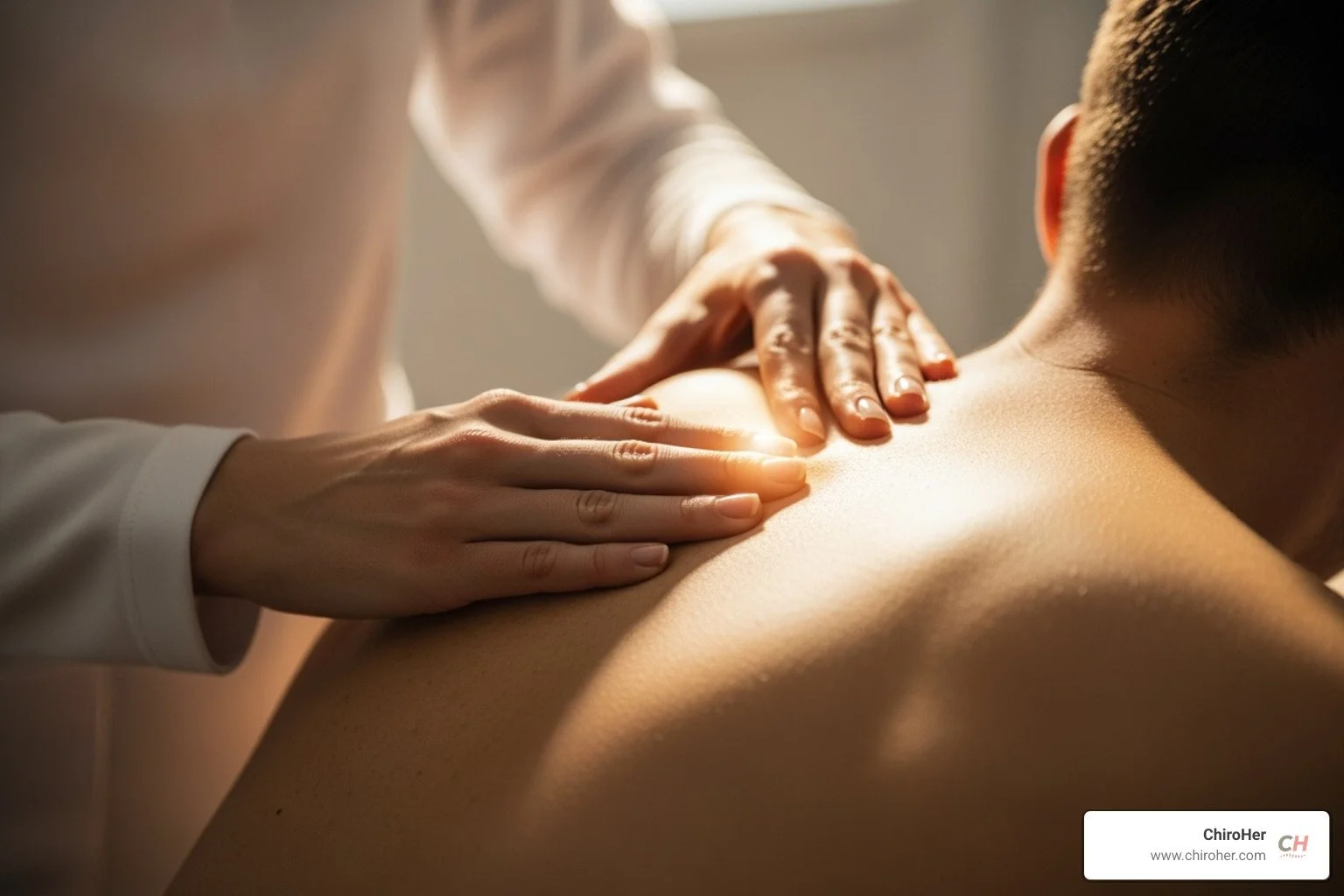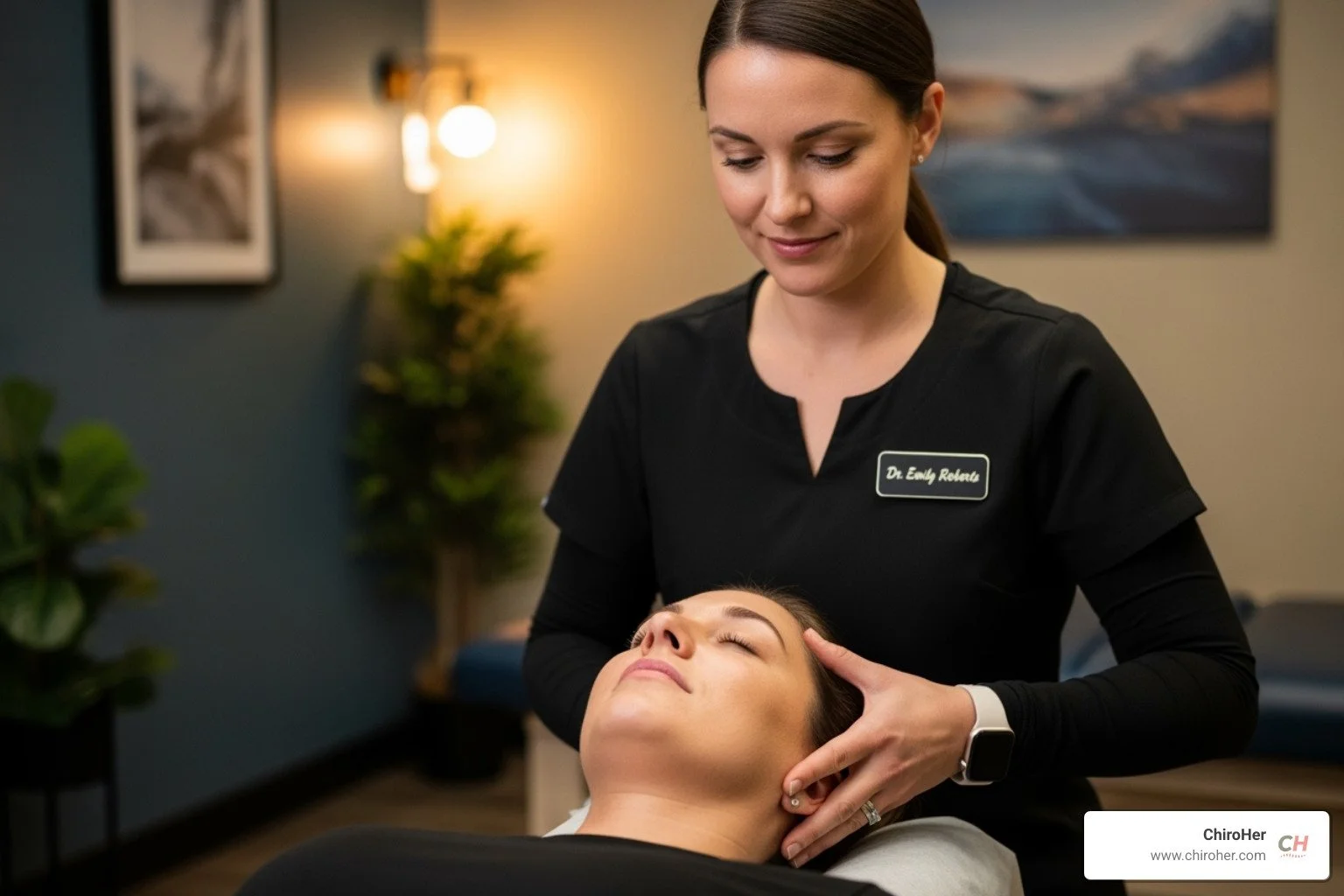Is Strain Counterstrain a Massage? Unpacking This Unique Therapy
What is Strain Counterstrain?
Strain counterstrain is not a massage but a gentle manual therapy technique that uses positioning rather than pressure to relieve pain and muscle spasms.
Quick Answer: Is Strain Counterstrain a Massage?
No - It's a positioning technique, not traditional massage
No oils or lotions used like in massage therapy
Passive positioning - you relax while the practitioner moves your body
90-second holds in comfortable positions to reduce pain
Focus on tender points rather than general muscle work
Developed in 1955 by osteopathic physician Dr. Lawrence Jones
This unique therapy works by placing your body in positions of comfort, allowing tight muscles and painful areas to naturally release tension. Unlike deep tissue massage that applies pressure, strain counterstrain moves you away from painful positions into ones that feel better.
The technique targets specific tender points throughout your body - small, sensitive areas that hurt when pressed. By positioning you so these points feel 70% better, your nervous system can reset and break the pain-spasm cycle that keeps you uncomfortable.
Hi! I'm Dr. Michelle Andrews, and I've used strain counterstrain techniques with hundreds of patients at ChiroHer to provide gentle, effective pain relief without the discomfort of traditional manual therapies. This approach works especially well for busy professionals and moms who need effective treatment but can't handle aggressive techniques during their healing process.
The Origins of a Gentle Revolution
The story of strain counterstrain therapy begins in 1955 with an osteopathic physician named Dr. Lawrence Jones. He found this gentle yet effective technique by accident, originally calling it "Spontaneous Release by Positioning." This name captures its core principle: allowing the body to release tension through careful positioning.
Dr. Jones found that by placing a patient's body in a specific, comfortable position, he could alleviate painful, reflexive tissue contractions. This wasn't about forcing alignment or stretching tight muscles. Instead, it was about influencing the nervous system. When muscles are strained, they can develop abnormal reflexes that keep them in a spasm. Dr. Jones found that by passively shortening the affected muscle, these reflexes could be reset, leading to an immediate reduction of muscle tone and improved joint function.
Since its inception, strain counterstrain has continued to evolve. Its effectiveness is why it remains a valued technique in osteopathic medicine, physical therapy, massage therapy, and chiropractic care. Its gentle nature makes it a powerful first choice for dealing with extreme discomfort, setting the stage for other therapeutic interventions. You can learn more about the history of manual therapies, including strain counterstrain, on platforms like Wikipedia.
How Strain Counterstrain Differs from Traditional Massage
When people hear "strain counterstrain massage," they often picture a typical massage with oils, kneading, and deep pressure. However, strain counterstrain is fundamentally different. It's a manual therapy technique, meaning we use only our hands for treatment, but the approach is unique.
Here's a table to illustrate the key distinctions:
Feature Strain Counterstrain Traditional Massage (e.g., Deep Tissue) Chiropractic Adjustment Technique Indirect, passive positioning of comfort Direct, hands-on manipulation, kneading, stroking Direct, high-velocity, low-amplitude thrusts Pressure Level Gentle, light pressure on tender points, no deep tissue work Moderate to deep pressure, can be intense Quick, controlled force Goal Reset neuromuscular reflexes, reduce spasm, alleviate tender points by moving away from pain Relax muscles, increase circulation, reduce general tension Restore joint mobility, reduce nerve interference Patient Role Passive and relaxed Passive, but may be asked for feedback on pressure Passive Tools/Lubricants Hands only, no oils or lotions Oils, lotions, sometimes tools (e.g., hot stones) Hands only, sometimes specialized tables
Unlike traditional massage, where the practitioner works directly into tight muscles, strain counterstrain is an indirect technique. We move your body away from the painful, restricted directions of motion. This passive positioning allows your body's natural healing mechanisms to take over without added stress.
This gentle approach means there's no need for oils or lotions, as we aren't performing gliding strokes or deep tissue work. Our focus is entirely on identifying and releasing specific tender points, which are often the root cause of widespread discomfort. If you're curious about how our hands-on approaches compare, you can learn more about our general manual therapy techniques.
The Core Principles of Strain Counterstrain
The effectiveness of strain counterstrain involves how the nervous system communicates with muscles. When you are injured or stressed, your body can create tender points, which are small, hypersensitive spots that hurt when pressed.
Key ideas in simple terms:
Pain can trigger a protective muscle spasm that gets stuck
Pushing into pain may increase guarding and discomfort
Moving you into comfort helps reset that protective reflex
The goal is to reduce tenderness and restore easier motion
This approach works with your muscle spindles, the tiny sensors that report muscle length and tension to your brain. When placed in comfortable positions, these sensors signal safety, and the nervous system allows muscles to let go.
Understanding the Strain Counterstrain Massage Technique
What a typical session looks like:
Gentle palpation to locate tender points mapped throughout the body
You rate the tenderness on a 1 to 10 scale
Your body is moved into a position of ease until the tenderness drops by about 70 percent
Hold this comfortable position for about 90 seconds while monitoring comfort
Return to neutral slowly over 5 to 10 seconds to avoid reactivating guarding
This process uses your proprioceptive system, your body's internal position sense. Learn more about proprioception here: https://www.dictionary.com/browse/proprioception
At ChiroHer, we also use fascial strain counterstrain to address restrictions in the connective tissue around muscles. See more about this option: https://www.chiroher.com/blog/fascial-strain-counterstrain
Conditions That Benefit from This Therapy
Because this method calms the nervous system rather than forcing change, it can help with a wide range of concerns:
Back pain, recent or long lasting
Neck pain and many tension headaches
Fibromyalgia and widespread tenderness
Pregnancy related aches that need a gentle approach
Acute injuries and post surgical soreness
Joint stiffness and chronic pain that did not improve with other care
This technique pairs well with therapeutic exercises to help maintain gains: https://www.chiroher.com/therapeutic-exercises
Trusted evidence and resources
You can read more about this approach and related research from reputable, external sources:
PubMed search results for counterstrain and positional release therapy: https://pubmed.ncbi.nlm.nih.gov/?term=counterstrain%20OR%20positional%20release%20therapy
NCBI Bookshelf search results for counterstrain topics: https://www.ncbi.nlm.nih.gov/books/?term=counterstrain
American Osteopathic Association overview of osteopathic manipulative treatment: https://osteopathic.org/what-is-osteopathic-medicine/osteopathic-manipulative-treatment/
Is Strain Counterstrain Right for You?
Strain counterstrain is a very gentle technique. It works with your body's natural reflexes rather than against them.
Who often finds this helpful:
People who feel worse after deep pressure or forceful treatments
Those with acute pain who cannot tolerate firm pressure
Individuals with osteoporosis who need a light approach
Pregnant patients seeking comfort focused care
Children and older adults who benefit from calm, passive positioning
Because the technique is passive, you simply relax while the practitioner positions you into comfort.
What to Expect During and After a Session
During your first visit:
We review your symptoms, history, and activities
Gentle palpation is used to locate tender points, which may appear far from where you feel pain
Your body is placed into a position of ease until the tenderness drops by about 70 percent
The position is held for about 90 seconds while you relax
You are returned to neutral slowly to help your system keep the improvement
Common outcomes:
Many people notice less tenderness right away
Range of motion often improves with less muscle tension
Mild soreness or fatigue can occur and usually resolves within 24 hours
At ChiroHer, we believe care should be a comfortable and reassuring experience. If you want to try this gentle approach, you can book here: https://www.chiroher.com/book-now
This guide is for informational purposes and is not a substitute for already established medical advice from your healthcare provider.

